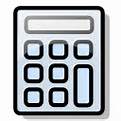Unplanned depreciation is used in Fixed Assets to handle unusual accounting situations in which the net book value (NBV) and accumulated depreciation amounts for an asset need to be adjusted without affecting the asset cost.
There are some rules for using unplanned depreciation. These include:
- You cannot allocate unplanned depreciation amounts to specific distributions, as you can in a distribution set.
- You cannot make expensed adjustments to assets for which you have previously entered unplanned depreciation and have since amortized the amount.

- You can apply unplanned depreciation to assets using flat rate or units of production methods, in addition to straight line methods.
- You cannot perform a mass change or prior period retirement for assets that have unplanned depreciation.
- If you have run preliminary depreciation and then enter unplanned depreciation, the unplanned transaction functions as a rollback event. Therefore, you cannot use unplanned depreciation as a negative adjustment of depreciation in the period of addition.
- Unplanned depreciation can only be entered if you are using a table based or flat rate method. For an asset using some other type of method, you will have to change the method first.
To enter an unplanned depreciation, navigate to the Asset Workbench:
1. Select the asset for which you want to enter unplanned depreciation and click the Books button.
2. In the Books window, enter a book.
3. Enter a reason for the unplanned depreciation in the Comments field as needed.
4. When you navigate to the Depreciation zone, you will see that the amounts will pop up. Click the Unplanned Depreciation button.
5. In the Unplanned Depreciation window, select the unplanned depreciation type.
6. Enter the unplanned amount as a positive or negative currency.
7. Enter the unplanned depreciation expense account.
8. Select the Amortize From Current Period check box. Leave this box clear if you want to amortize the remaining net book value in a subsequent period. [The value of this check box overrides the value of the Amortize Adjustments check box in the Books window.]
9. Click Done to save your work.